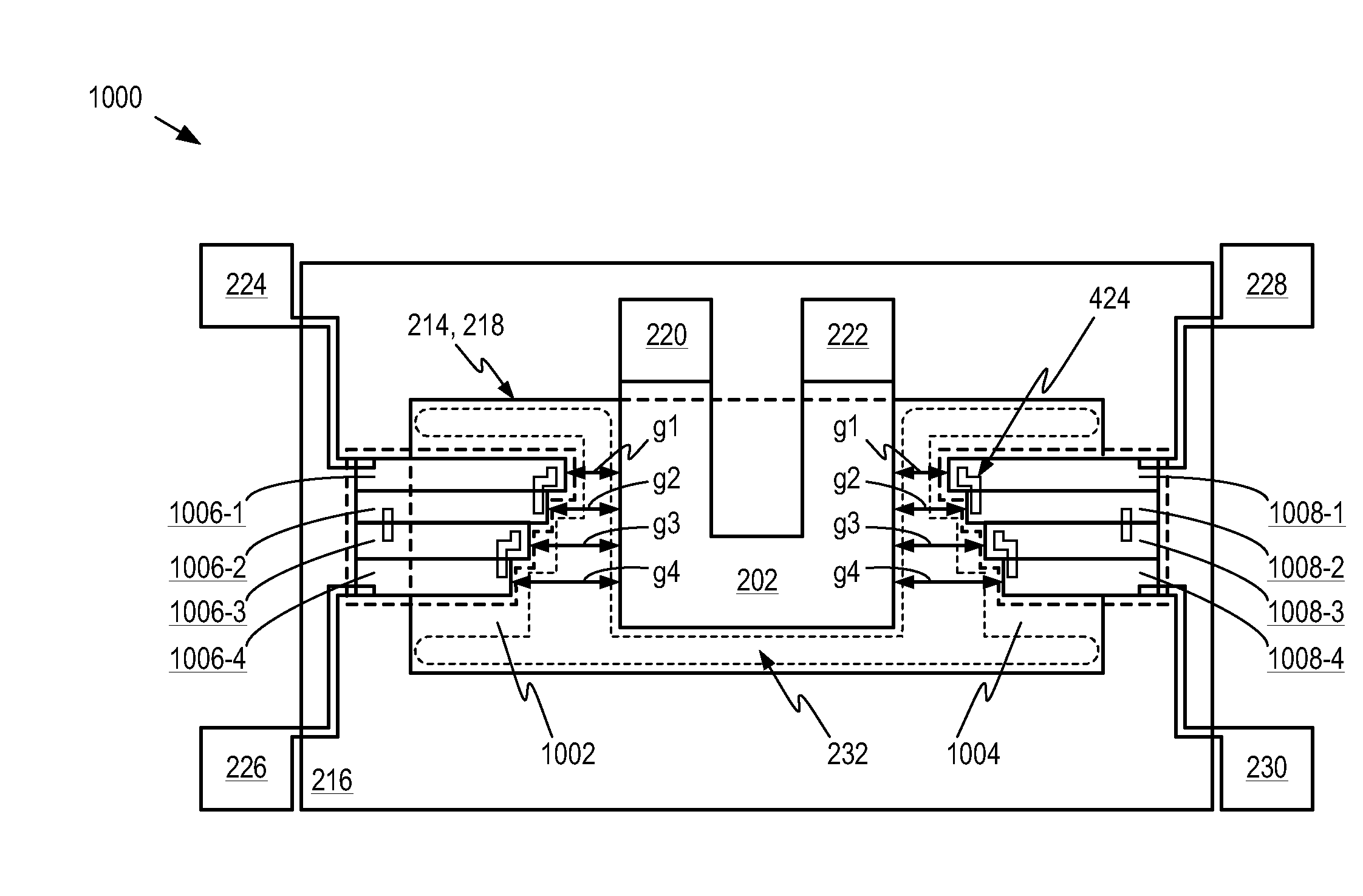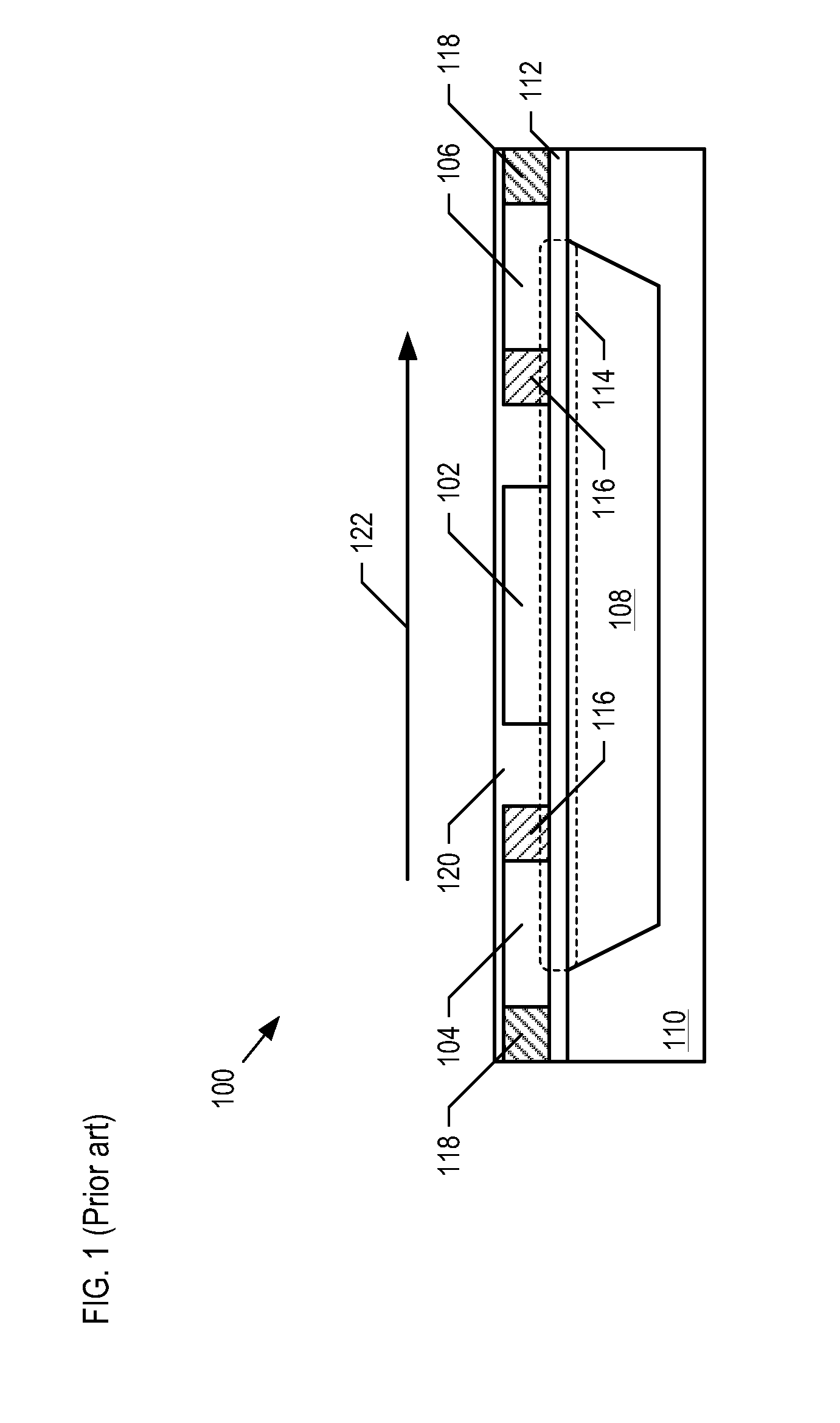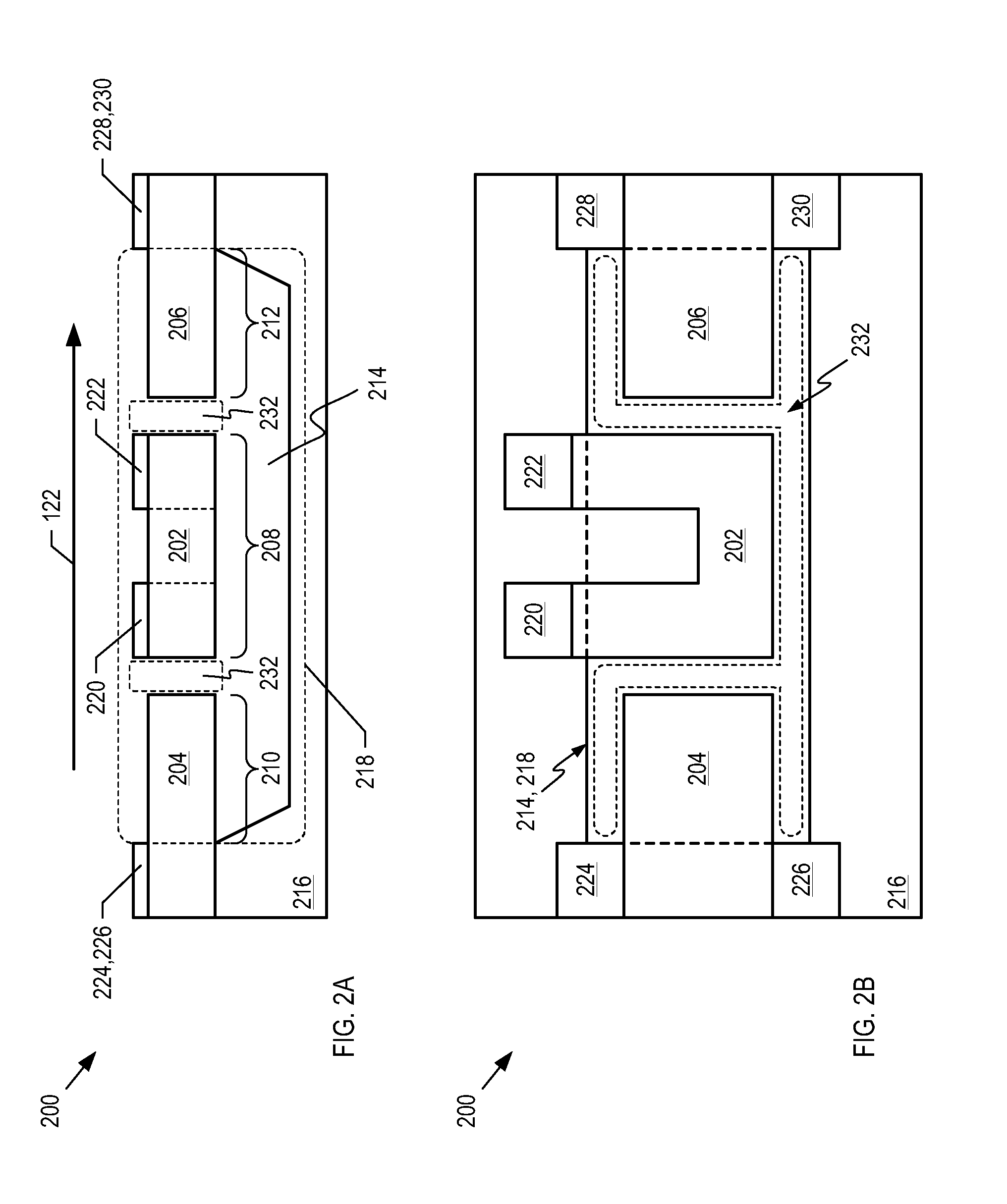Flow Sensor and Method of Fabrication
a flow sensor and flow sensor technology, applied in the field of flow sensors, can solve the problems that the device designer would normally be drawn away from the use of self-supporting silicon structures in heat carrying elements by the device designer, and achieve the effects of reducing the overall sensor size, enhancing media compatibility, and eliminating the damage to exposed wire bonds
- Summary
- Abstract
- Description
- Claims
- Application Information
AI Technical Summary
Benefits of technology
Problems solved by technology
Method used
Image
Examples
Embodiment Construction
[0033]The following terms are defined for use in this Specification, including the appended claims:[0034]Single-crystal material means material having a crystalline structure that comprises substantially only one type of unit-cell. A single-crystal layer, however, may exhibit some crystalline defects such as stacking faults, dislocations, or other commonly occurring crystalline defects. Examples of single-crystal materials include, without limitation, single-crystal silicon, single-crystal germanium, single-crystal III-V semiconductors and their compounds, and single-crystal silicon carbide.
[0035]FIG. 1 depicts a cross-sectional view of a schematic diagram of a portion of a flow sensor in accordance with the prior-art. Flow sensor 100 comprises heater 102, temperature sensors 104 and 106, membrane 114, and substrate 110. Exemplary prior-art flow sensors are disclosed in U.S. Pat. No. 4,478,076, issued Oct. 23, 1984 and U.S. Pat. No. 6,871,538, issued Mar. 29, 2005.
[0036]Heater 102 i...
PUM
 Login to View More
Login to View More Abstract
Description
Claims
Application Information
 Login to View More
Login to View More - R&D
- Intellectual Property
- Life Sciences
- Materials
- Tech Scout
- Unparalleled Data Quality
- Higher Quality Content
- 60% Fewer Hallucinations
Browse by: Latest US Patents, China's latest patents, Technical Efficacy Thesaurus, Application Domain, Technology Topic, Popular Technical Reports.
© 2025 PatSnap. All rights reserved.Legal|Privacy policy|Modern Slavery Act Transparency Statement|Sitemap|About US| Contact US: help@patsnap.com



